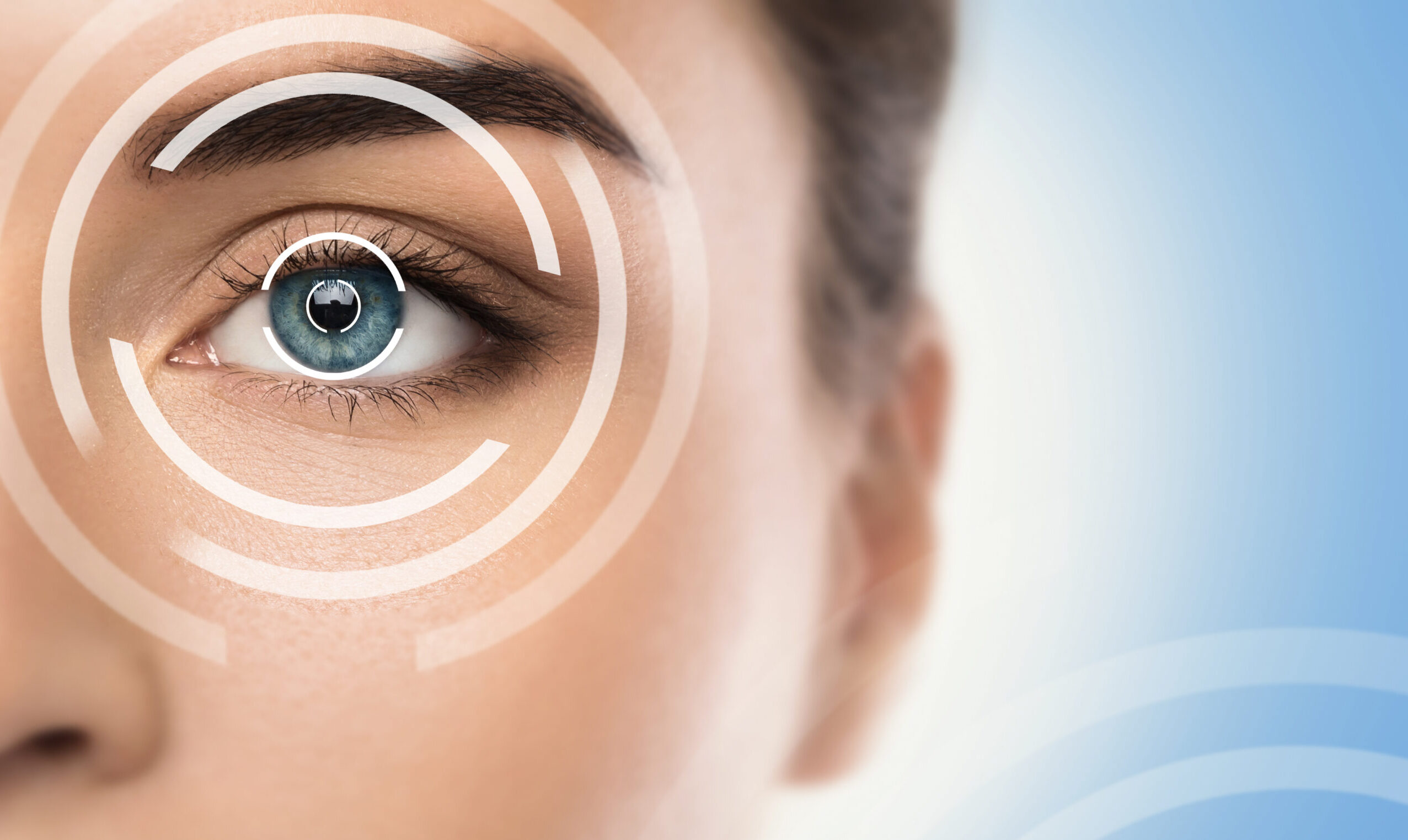Can LASIK Surgery Correct Your Vision

LASIK surgery is a commonly performed procedure aimed at correcting refractive vision errors such as myopia, hyperopia, and astigmatism.
This article examines the effectiveness of LASIK surgery in improving visual acuity and explores the factors that determine one’s suitability for the procedure.
Furthermore, it outlines the step-by-step process of the surgery, the post-operative care required, and the potential risks and complications associated with the procedure.
Additionally, the article discusses the long-term outcomes and success rates of LASIK surgery.
Key Takeaways
- LASIK surgery provides long-lasting vision correction.
- LASIK surgery can eliminate or reduce the need for glasses or contact lenses.
- LASIK surgery corrects nearsightedness, farsightedness, and astigmatism.
- The success of LASIK surgery depends on factors such as eye health, stability of refractive error, and overall medical history.
LASIK Surgery: What Is It
LASIK surgery is a refractive eye surgery procedure that uses a laser to reshape the cornea, aiming to correct the patient’s vision. This procedure offers several benefits for individuals with refractive errors such as myopia, hyperopia, and astigmatism.
One of the main advantages of LASIK surgery is its ability to provide long-lasting vision correction. Many patients experience significant improvement in their visual acuity immediately after the surgery, with minimal downtime required for recovery.
Additionally, LASIK surgery can eliminate or reduce the need for glasses or contact lenses, enhancing the patient’s quality of life and convenience.
However, it is important to note that LASIK surgery costs can vary depending on factors such as the surgeon’s experience, the technology used, and the geographical location. It is recommended that individuals considering LASIK surgery consult with their ophthalmologist to discuss the potential benefits and associated costs.
Understanding Vision Problems: Myopia, Hyperopia, and Astigmatism
This discussion will focus on the types of vision problems, namely myopia, hyperopia, and astigmatism, as well as the LASIK treatment options available for these conditions.
Myopia, also known as nearsightedness, is characterized by difficulty in seeing distant objects clearly.
Hyperopia, or farsightedness, causes difficulties in focusing on nearby objects.
Astigmatism, on the other hand, results in blurred or distorted vision at all distances.
Understanding these vision problems is crucial in exploring the potential benefits and limitations of LASIK as a treatment option.
Types of Vision Problems
Refractive errors such as myopia, hyperopia, and astigmatism are common types of vision problems that can be corrected through surgical procedures. These conditions occur when the shape of the eye prevents light from focusing directly on the retina, resulting in blurred or distorted vision. While wearing corrective lenses, such as glasses or contact lenses, can provide temporary relief, surgical interventions offer a more permanent solution.
Here are three important points regarding refractive errors and corrective lenses:
- Refractive errors occur when the eye’s ability to bend light is impaired, leading to blurred vision.
- Corrective lenses work by modifying the way light enters the eye, compensating for the specific refractive error.
- While glasses and contact lenses can effectively correct vision, surgical procedures like LASIK offer a more convenient and long-lasting solution.
LASIK Treatment Options
One popular method for treating refractive errors involves the use of laser technology to reshape the cornea, thereby improving visual acuity. LASIK (Laser-Assisted In Situ Keratomileusis) is a commonly performed surgical procedure that corrects nearsightedness, farsightedness, and astigmatism. However, there are alternative treatments available for those who are not suitable candidates for LASIK or prefer other options. These alternatives include PRK (Photorefractive Keratectomy), LASEK (Laser Epithelial Keratomileusis), and Epi-LASIK (Epithelial Laser In Situ Keratomileusis). Each procedure has its own advantages and disadvantages in terms of recovery time, discomfort, and visual outcomes.
In terms of cost, LASIK surgery can range from $1,500 to $3,000 per eye, depending on various factors such as the surgeon’s experience, location, and technology used. It is important to consult with a qualified ophthalmologist to determine the most suitable treatment option and discuss any potential costs involved.
| LASIK Alternatives | Advantages |
|---|---|
| PRK | No corneal flap, suitable for thin corneas |
| LASEK | Less postoperative discomfort |
| Epi-LASIK | Faster visual recovery, reduced risk of haze |
Assessing Candidacy for LASIK Surgery
Assessing candidacy for LASIK surgery involves determining if the patient meets the necessary criteria based on eye health, refractive error, and overall medical history. Evaluating eligibility for LASIK surgery requires careful consideration of several factors:
- Eye health: The patient’s eyes must be free from any underlying ocular pathologies, such as glaucoma or cataracts, that could affect the success of the procedure.
- Refractive error: LASIK surgery is typically recommended for individuals with nearsightedness, farsightedness, or astigmatism within certain limits. The degree of refractive error and stability of the prescription over time play a crucial role in determining suitability for LASIK.
- Preoperative considerations: The patient’s overall medical history, including any pre-existing conditions or medications, is assessed to ensure that there are no contraindications for LASIK surgery.
The LASIK Procedure: Step-by-Step
The LASIK procedure involves several sequential steps, beginning with the creation of a thin corneal flap using either a microkeratome or femtosecond laser. Once the flap is created, it is lifted to expose the underlying corneal tissue, which is then reshaped using an excimer laser. The excimer laser precisely removes a thin layer of tissue from the cornea to reshape its curvature and correct the refractive error. After the cornea is reshaped, the flap is repositioned, acting as a natural bandage that promotes healing. The entire LASIK procedure typically takes around 10 minutes per eye and is performed under topical anesthesia. Surgical instruments commonly used during the procedure include the microkeratome or femtosecond laser for flap creation and the excimer laser for corneal reshaping.
| Step | Procedure |
|---|---|
| 1 | Creation of corneal flap using microkeratome or femtosecond laser |
| 2 | Lifting the flap to expose the corneal tissue |
| 3 | Reshaping the cornea using an excimer laser |
| 4 | Repositioning the flap as a natural bandage |
| 5 | Performing the procedure under topical anesthesia |
| 6 | Utilizing surgical instruments such as microkeratome or femtosecond laser and excimer laser |
Recovery and Post-Surgery Care
This discussion will focus on the recovery and post-surgery care associated with LASIK surgery.
It is important to understand the healing time duration, follow-up appointments necessary, and potential side effects that may arise after the procedure.
Healing Time Duration
Following LASIK surgery, the duration of healing time varies depending on individual factors such as the extent of the procedure, pre-existing eye conditions, and overall health. The healing process after LASIK surgery is an important aspect of post-operative care that ensures optimal visual outcomes.
Here are three key factors that influence the healing time duration:
- Extent of the procedure: The complexity of the LASIK procedure, including the amount of corneal tissue reshaped, can affect the healing process. More extensive procedures may require a longer healing time.
- Pre-existing eye conditions: Individuals with pre-existing eye conditions, such as dry eye syndrome or corneal abnormalities, may experience a longer healing time after LASIK surgery. These conditions can affect the rate of corneal healing.
- Overall health: General health factors, such as immune system function and overall wellness, can impact the healing process. Individuals with compromised immune systems or certain medical conditions may require a longer healing time.
Understanding these factors can help patients and healthcare professionals manage expectations and provide appropriate post-operative care to support the healing process after LASIK surgery.
Follow-Up Appointments Necessary
Regular follow-up appointments are necessary after the procedure to monitor the progress of the healing process and ensure optimal post-operative care. The follow-up appointment schedule typically consists of visits at regular intervals during the first few weeks after the surgery, followed by less frequent visits over the next several months.
These appointments serve multiple purposes in the context of LASIK surgery. Firstly, they allow the ophthalmologist to assess the patient’s healing progress and address any potential complications that may arise. Secondly, these appointments provide an opportunity for the patient to discuss any concerns or questions they may have regarding their vision or overall eye health.
Lastly, follow-up appointments are crucial in determining the long-term success of the surgery, as they enable the ophthalmologist to monitor the stability of the patient’s vision correction and make any necessary adjustments to ensure optimal visual outcomes. Therefore, adhering to the recommended follow-up appointment schedule is of utmost importance for the overall success and satisfaction of the LASIK procedure.
Potential Side Effects
Potential side effects of the procedure may include dry eyes, glare, halos, and fluctuating vision. These side effects are generally temporary and tend to improve over time as the eyes heal. However, there are also potential risks and post-surgery complications that patients should be aware of.
- Infection: Although rare, there is a small risk of developing an infection after LASIK surgery. It is important to follow all post-operative care instructions to minimize this risk.
- Undercorrection or overcorrection: In some cases, the desired vision correction may not be fully achieved. This can result in the need for additional procedures or the continued use of glasses or contact lenses.
- Vision changes: While LASIK aims to correct vision, it is possible for vision to change over time, requiring further interventions or adjustments. Regular follow-up appointments are essential to monitor any changes and address them appropriately.
It is crucial to carefully weigh the potential risks and benefits before undergoing LASIK surgery and to have realistic expectations for the outcome.
Potential Risks and Complications
Adverse events and complications associated with LASIK surgery include dry eyes, glare, halos, night vision problems, and induced astigmatism. LASIK risks and post-surgery complications are important considerations for patients seeking vision correction through this procedure.
Dry eyes, a common side effect, can occur due to decreased tear production after surgery. Glare and halos around lights are also reported by some patients, especially in low-light conditions. Night vision problems may manifest as difficulty seeing in low-light environments or experiencing visual disturbances while driving at night.
Additionally, induced astigmatism, where the cornea becomes irregularly shaped, can occur as a complication of LASIK surgery. These potential risks and complications should be thoroughly discussed with the patient during the preoperative consultation to ensure informed decision-making and appropriate management post-surgery.
Long-term Results and Success Rates
Transitioning from the previous subtopic on the potential risks and complications of LASIK surgery, it is crucial to assess the long-term results and success rates of this procedure. Evaluating these factors can provide valuable insight into the overall effectiveness and impact on patients’ lives.
Long-term patient satisfaction serves as an important indicator of the success of LASIK surgery. Research has shown that a significant number of patients experience improved vision after the procedure, leading to high levels of satisfaction. This positive outcome can have a profound impact on the quality of life for individuals who no longer rely on corrective eyewear.
To further understand the long-term effects of LASIK surgery, it is important to consider the following:
- Stability of visual outcomes over time: Assessing the consistency of vision correction is crucial in determining the long-term success of LASIK surgery.
- Impact on daily activities: Understanding how LASIK surgery affects patients’ ability to perform tasks such as driving, reading, and working can provide insight into the procedure’s overall impact on quality of life.
- Long-term complications: Monitoring for potential long-term complications, such as dry eyes or night vision disturbances, is essential to ensure patient satisfaction and well-being over time.
Overall, examining the long-term results and success rates of LASIK surgery provides valuable information regarding patient satisfaction and the procedure’s impact on improving quality of life.
Frequently Asked Questions
How Long Does the LASIK Procedure Typically Take?
The duration of the LASIK surgery procedure typically varies depending on several factors, including the complexity of the case and the surgeon’s experience. However, on average, the procedure itself usually takes around 15 to 30 minutes.
Are There Any Age Restrictions for LASIK Surgery?
Age restrictions for LASIK surgery vary depending on the surgeon and patient factors. Generally, candidates should be at least 18 years old, have stable vision for a certain period, and have realistic expectations. LASIK surgery success rate and cost should also be considered.
Can LASIK Surgery Correct Both Nearsightedness and Farsightedness?
LASIK surgery is an effective treatment for both nearsightedness and farsightedness. However, it is important to consider the potential risks associated with the procedure, such as dry eyes, glare, halos, and possible undercorrection or overcorrection.
What Activities Should Be Avoided During the Recovery Period?
Activities to avoid during LASIK recovery include swimming and contact sports. These activities can increase the risk of infection or injury to the eyes, which can negatively impact the healing process and overall outcome of the surgery.
Is LASIK Surgery Covered by Insurance?
LASIK surgery is a commonly performed procedure to correct refractive errors in vision. Whether or not it is covered by insurance depends on the specific insurance plan and the terms of coverage for elective procedures.








